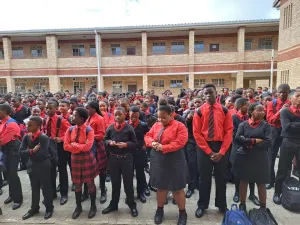As we all know, the performance of South Africa’s education system really sucks. But not everywhere. There are places of outperformance; it’s critical to find out why and how they are outperforming.
One of those places is Makhanda (Grahamstown), where the turnaround has been so mind-boggling, the question shouts out at you: “What on earth have they done there?”
Here are the basic stats (and I’m grateful to Rhodes University Economic Professor Emeritus Gavin Keeton for bringing this to my attention):
In 2013, Makhanda’s government schools were the worst-performing in the Eastern Cape and close to the worst in all of South Africa. Only 49% of those who wrote the matric exam passed. As fewer than half of their overall age cohort wrote the exam, this means that less than one-quarter passed matric. Just 11% of those who wrote matric received the pass required for entrance to university.
These numbers are particularly dire because Makhanda is an education-focused town. In addition to Rhodes University it has three swanky private schools — St Andrews, Kingswood and DSG. The town also boasts two excellent public schools, Graeme College and Victoria Girls’ High School — which have been outperformers since year dot. The number of scholars at Makhanda’s township schools who went on to attend the university in their own town in 2013 was perhaps 10. Total.
In the past year, however, the city’s matric pass rate has increased to 82%, even though the total number of scholars who sat the exam has more or less doubled in the past five years.

And the number of university passes has increased to around 43% over the past five years, with the number of university passes at one of the township schools, Ntsika Secondary School, now matching Victoria Girls’ High School for the first time.

So, back to that crucial question: How has this extraordinary turnaround been achieved?
I spoke to Ashley Westaway, the head of the longstanding Makhanda organisation Gadra (the Grahamstown Distress Relief Association), widely regarded as the leading education NGO in town. It turns out there are, inevitably, many reasons.
However, Westaway says it comes down to one essential thing: mobilising a community, which includes great leadership and lots of interventions. It helps that Makhanda is a town where educational facilities are on hand, so the mobilisation process can do its job.
The process, Keeton told me, started in 2014 when Professor Sizwe Mabizela was installed as the new vice-chancellor at Rhodes. In his inaugural address, Mabizela highlighted the very South African disparities in the town and committed the university to participating in a wider educational effort. “Rhodes,” he said, “must become of Makhanda, and not just in Makhanda.”
Following his call, Rhodes teamed up with Gadra, which was instrumental in putting together a multilevel programme of transformation in the town’s public schools.
Standout interventions
Crucially, Westaway says, the focus should not only be on the matric pass rate, but on the cohort size too, because matric pass rates can mask a very high dropout rate. Focusing not just on the ultimate outcome but on every level and sub-set of the educational system, the broader dynamic of education was improved.
Gadra has made two standout interventions. One is the Nine Tenths Mentoring Programme at Rhodes, in which more than 100 student volunteers mentor matric students at four township schools every year. They teach their mentees to plan their study programmes and make notes, and they teach general academic skills that are sorely lacking at no-fee schools.
The programme gets its name from the French novelist and journalist Anatole France, who said, “Nine-tenths of education is encouragement.” Keeton says the mentors provide scholars with more than just educational assistance; they are also role models.
The second intervention is the Gadra Matric School (colloquially known as the Second Chance School). The idea is to enable some students to redo the matric year so they can improve their marks and get into university or a Stem-associated university course.
The school has about 300 students, and Westaway says it is here particularly that the organisation can draw on the resources in the city, using either retirees or students to do some of the teaching.
Behind all of this is transformational leadership.
The town (everyone you speak to in Makhanda calls it a “city”, but you know, let’s be real) has set itself the target of being “the leading academic education centre and city in South Africa”.
Having an explicit target is transformational because it’s not about maintaining, it’s about changing. The vision statement goes on to say Makhanda wants to be recognised as a leading educational centre and that the aim is to provide quality, relevant education at all levels. Also very transformational — deep-rooted change, not just change for appearance’s sake.
The thing about turnarounds, Westaway says, is that they are naturally self-perpetuating and enhancing. For example, people who got Gadra scholarships in the past are now participating by helping the next generation, and so on.
The situation is by no means perfect and one of Makhanda’s schools, Mary Waters High School, is a bit of a problem child. It’s a dual-language, cross-cultural school and, ironically, demonstrates the effect of outstanding leadership because it was once a higher performer before a renowned headmistress left five years ago.
What worked in Makhanda won’t necessarily work in other places in South Africa, but it does demonstrate the obvious: nothing is inevitable. There is a utility in wide, cross-sectional, coordinated action — otherwise called leadership. DM
This post first appeared in the Daily Maverick here. To signup for Daily Maverick's fabulous newsletters, click below.



Join the conversation